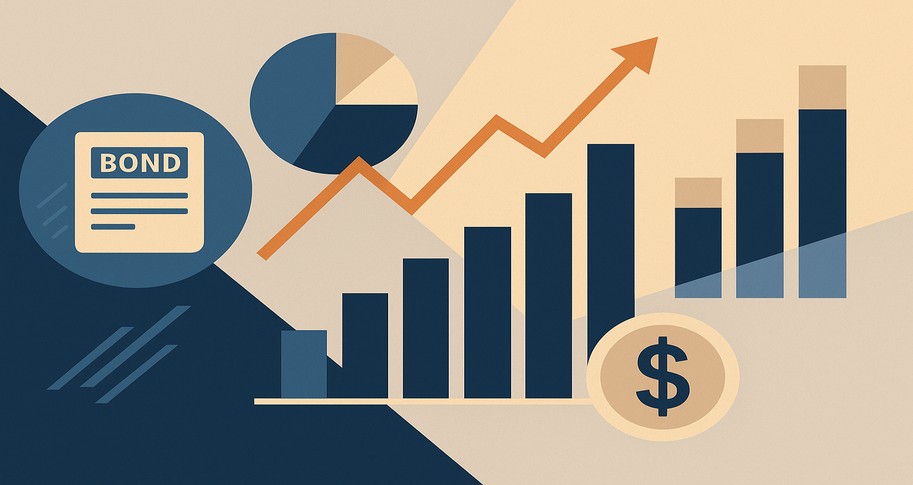
In an era where consumer expectations are rapidly changing, Corporate Social Responsibility (CSR) has emerged as a pivotal factor in business success. Today, younger generations seek companies that take genuine steps to improve the world and provide transparency for their consumers. Recent studies indicate that 77% of consumers are motivated to purchase from companies that are diligent in their efforts. This growing consumer awareness and demand have pushed companies to adopt robust CSR practices, influencing their supply chain partners to align with these values.
In the article, “An investigation of corporate social responsibility conformity: The roles of network prominence and supply chain partners” by Jason Ridge, professor at the Walton College of Business, and Walton alumna Ellie Falcone (TCU), the authors explore the idea of CSR conformity. This research underscores the significance of understanding CSR from both organizational and supply chain perspectives, highlighting the role of network prominence.
Understanding CSR Conformity
“CSR conformity” refers to the idea of companies within a certain industry conforming to similar CSR standards. There are many advantages to conformity, such as securing a firm’s legitimacy among other firms and establishing a reference point that guides companies on how much time, resources, etc., to commit to their efforts. Conformity is often derived from the network of supply chain relationships within which a firm is embedded. For example, if a one company has suppliers that are all focused on sustainability, the likelihood is that they will also focus their CSR efforts on sustainability.
Understanding where one’s firm lies within a supply chain network can help inform the CSR strategy by providing insight into the company’s level of power, influence, and dependence on the network in which they reside. With this knowledge, company leaders can gauge their firm’s ability to manage risks, access resources, and achieve goals within the network. These insights are often referred to as “network prominence,” which is a firm’s status or position within the network of supply chain partners including suppliers, buyers, and industry peers. Network prominence gives an idea of a firm’s degree of visibility, recognition, and dominance that a focal firm has.
3 Levels of Network Prominence
Within the idea of network prominence, there are three levels: high, middle, and low status. High-prominence firms have significant power and can afford to deviate from industry norms. Because they are already established as a pillar within their industry, high-prominence firms are leaders who pave the way for industry standards. This level of prominence means they have, per Ridge and Falcone, “little to fear.” Companies such as Amazon, Walmart, and Apple are confident in the place they hold in the market. Therefore, they are not as tied down to supply chain partners’ expectations and tend to play more of a dominant role in the industry.
On the other hand, low-prominence firms have “little to lose” given their already inferior network status. Conformity provides little advantage to this level of firm, causing them to blend in with the already established brands, so deviating is a strategy to potentially improve their disadvantaged position. Low-prominence firms may also choose to deviate from industry norms to make a name for themselves and their brand. By differentiating themselves, low-prominence firms look to create brand recognition and gain the attention of supply chain partners.
In contrast to low- and high-prominence firms, those with middle-prominence prefer to conform to the norms because it provides social legitimacy and helps them maintain stable relationships with their supply chain partners and within the company itself. Conforming also provides comfort to mid-level firms by giving them a reference point to the CSR standards within their industry. As stated earlier, CSR practices have become increasingly crucial in the success of businesses, so not achieving the expected levels of CSR can elicit criticism from consumers and investors. In contrast, going above industry norms may elicit criticism from fellow firms for setting the standard too high and making that the expectation for other industry firms.
This research reveals a relationship between network prominence and CSR conformity, where medium-prominence firms are the most likely to conform. However, this relationship is moderated by different contexts. For example, if companies within a supply chain all have similar CSR practices, then even the largest and smallest companies will follow the industry standard more closely. This means that companies like Apple and its suppliers, who all follow similar CSR practices, are more likely to stick to industry standards regardless of their size. This supply chain conformity makes both high- and low-prominence firms more likely to conform.
To Conform or not to Conform
This research says that when supply chain partners align CSR practices, it creates an external norm that reduces uncertainties and fosters cooperation, leading to improved efficiency and effectiveness across the supply chain. With this, a focal firm can focus more efforts on their CSR goals and adhering to the industry standards with the support of their aligned supply chain.
While conformity has many advantages, this research stresses the importance of “differentiation without deviation.” It is crucial for middle-prominence companies to find a balance between conformity and distinctiveness. While conformity provides many benefits, being too similar to competitors can increase competitive pressure and reduce the effectiveness of the practices.
To achieve this balance, companies must conduct a thorough assessment of their own CSR practices, industry norms, and the initiatives of their supply chain partners. This process begins with a detailed evaluation of the company’s current CSR strategies, identifying strengths, weaknesses, and areas for improvement. Understanding their current CSR status helps companies align with industry standards and identify areas for innovation without diverging too much from the norm.
Understanding where a firm can deviate requires assessing the industry norms to establish a baseline for CSR standards. Firms should research the practices of their competition and partners through sustainability reports, public CSR initiatives, and industry-wide benchmarks. By understanding these norms, a company can ensure its practices meet these standards without going too far above them. While conducting these assessments, actively managing network prominence is crucial, as it has a major influence on CSR strategy.
Regulatory Considerations for CSR
This research also highlights the importance of policymakers considering the supply chain perspective when making industry-specific regulations for CSR. By examining norms and interfirm networks, policymakers can develop comprehensive and effective regulations that promote CSR throughout the supply chain. Understanding industry standards helps set realistic regulatory benchmarks, fostering compliance and elevating practices across the board. Considering these factors allows for tailored regulations that support CSR initiatives from firms of all sizes and network prominence, ensuring all firms contribute effectively to CSR goals.
As the demand for transparency and genuine action from CSR efforts grows, companies must navigate the delicate balance between conforming to industry standards and standing out among the crowd via differentiation. Incorporating these insights can provide companies with helpful ways to not only meet but exceed the expectations of modern consumers. By focusing on CSR norms and the dynamics of interfirm networks, both companies and policymakers can create an environment that supports innovation and accountability, driving widespread impacts on the planet.
 Kaslyn Tidmore is a second-year graduate student at the University of Arkansas, earning
her master’s degree in public relations and advertising. Before relocating to Arkansas,
Kaslyn graduated from the University of Oklahoma with a bachelor’s degree in print
journalism and a minor in editing and publishing. During this time, she interned with
publications such as, Parker County Today Magazine, WedLinkMedia, Modern Luxury, and
the school’s newspaper, the OU Daily. Following her role as the graduate assistant
to Editor-in-Chief Ryan Sheets, Kaslyn now serves as a GA in the Center for Media
Ethics and Literacy at the School of Journalism and Strategic Media.
Kaslyn Tidmore is a second-year graduate student at the University of Arkansas, earning
her master’s degree in public relations and advertising. Before relocating to Arkansas,
Kaslyn graduated from the University of Oklahoma with a bachelor’s degree in print
journalism and a minor in editing and publishing. During this time, she interned with
publications such as, Parker County Today Magazine, WedLinkMedia, Modern Luxury, and
the school’s newspaper, the OU Daily. Following her role as the graduate assistant
to Editor-in-Chief Ryan Sheets, Kaslyn now serves as a GA in the Center for Media
Ethics and Literacy at the School of Journalism and Strategic Media.




